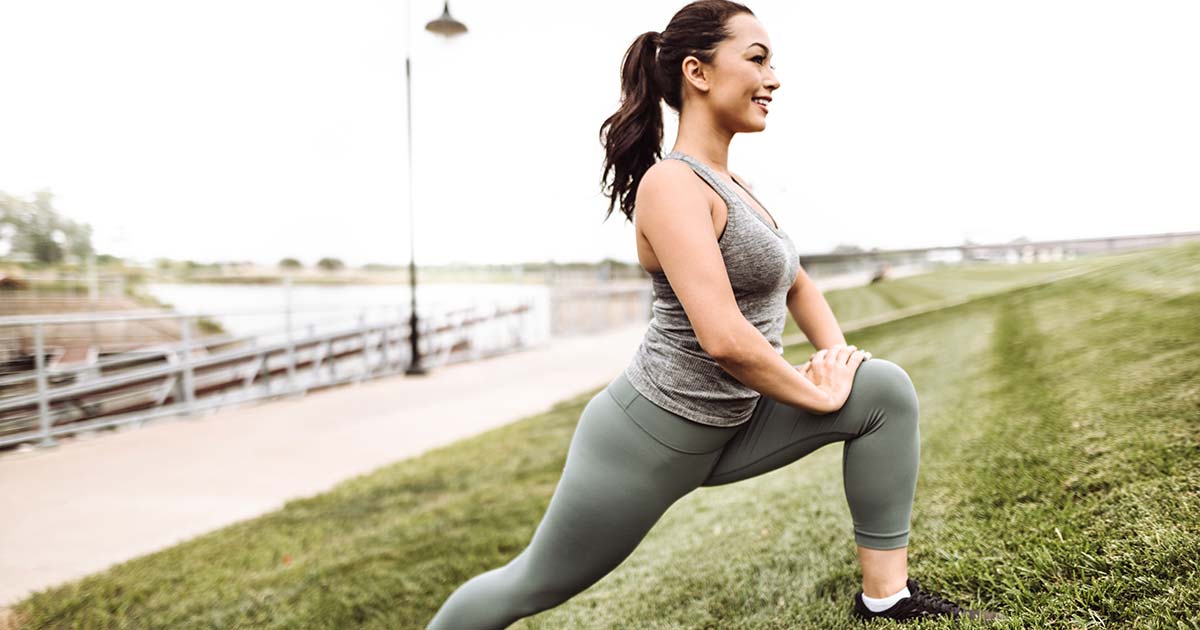6 Simple Ways to Increase Your Flexibility
Advice to improve your movement, fitness, and overall health from the world's #1 in orthopedics.
The ability to move your joints through their full range of motion allows you to perform basic movements using proper form, which in turn can reduce the strain on your joints, lessen pain, and improve your athletic performance.

Below, Polly de Mille, an exercise physiologist at HSS’s Sports Rehabilitation and Performance Center, shares some of her favorite tips for increasing flexibility.
-
1. Consider foam rolling.
Research has shown that using a foam roller results in similar gains in short-term flexibility as traditional stretching. For example, using a foam roller on your thigh can increase circulation to the muscles and improve flexibility. Simply roll up and down on your thigh three to four times and then rock your leg side to side on the roller a few times. Watch this video to learn more about foam rolling. Other self-myofascial tools include massage sticks and balls and percussion devices. Just a few minutes of self-myofascial release can loosen up tight tissues.
-
2. Perform dynamic rather than static stretching prior to activity.
Dynamic stretching involves moving back and forth through your joint’s range of motion without holding or straining. One example of a dynamic stretch would be 15 leg swings during which you just let your leg find its natural range of motion as it moves back and forth.
There is no “holding the stretch” in dynamic stretching. Generally, as you go through a movement repeatedly, you will gradually increase your range of motion, but you’re not trying to get to your limit. Hip openers, butt kicks, and Frankenstein walks are other examples of dynamic stretches that can be part of an effective warm-up.
-
3. Perform static stretching after activity.
Your muscles will be warm and more pliable after a workout — so this is the perfect time to hold a stretch. Extend a muscle or a group of muscles to the farthest point you can without pain and hold the stretch for at least 20 seconds. Repeat 2-4 times.
-
4. Target your stretches to the areas that need it.
Pay particular attention to areas that are particularly tight. The stretches that are the most challenging for you are often the ones you need the most. If your hamstrings are pretty flexible but you’re tight in your hip flexors and calves, focus your stretching time on those areas that need it. If you sit at a desk all day, your chest and the front of your hips will likely benefit from some stretching. If you are extremely flexible everywhere, there’s no need to try to increase flexibility beyond a normal joint range of motion. Your time may be better spent working on strengthening the muscles that support your joints.
-
5. Stretch frequently.
Flexibility gains are hard-won and easily lost. Stretch the areas that are particularly tight daily and, if possible, do it more than once a day.
-
6. Make sure you are stretching the muscle safely.
Just because you learned to do a certain stretch when you ran track in high school doesn’t mean it’s good for you. In fact, certain common stretches, like hurdler’s stretch, may place your knee in a compromised position. You should not feel strain, pressure or pain in a joint when you are trying to stretch a muscle. Just find the point at which you feel a stretch in the muscle, without discomfort, and avoid any position that feels like it is causing strain in the joint.
Published 6/9/2022




